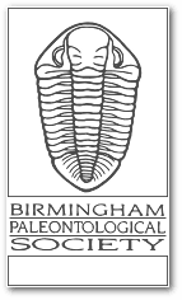Visitor
Paleo in the News
Research hailing the benefits of the COVID-19 shot keeps coming
There was more good health news about the COVID-19 vaccine for infants, kids and adults in December. There’s still time to get the shot this winter.
Categories: Fossils
These space stories made us look up in 2025
Space is always inspiring and 2025 was no exception, with finding Betelgeuse’s buddy, debuting a prolific survey telescope and more.
Categories: Fossils
Two more antibiotics have been approved in the U.S. to treat gonorrhea
The bacteria behind the sexually transmitted disease gonorrhea is known for developing antibiotic resistance. Now there are two new treatment options.
Categories: Fossils
Dinosaur bones found almost on top of each other in Transylvania
Scientists exploring Romania’s Hațeg Basin have discovered one of the densest dinosaur fossil sites ever found, with bones lying almost on top of each other. The K2 site preserves thousands of remains from a prehistoric flood-fed lake that acted like a natural bone trap 72 million years ago. Alongside common local dinosaurs, researchers uncovered the first well-preserved titanosaur skeletons ever found in the region. The site reveals how ancient European dinosaur ecosystems formed and evolved in the final chapter of the age of dinosaurs.
Categories: Fossils
Dinosaur bones found almost on top of each other in Transylvania
Scientists exploring Romania’s Hațeg Basin have discovered one of the densest dinosaur fossil sites ever found, with bones lying almost on top of each other. The K2 site preserves thousands of remains from a prehistoric flood-fed lake that acted like a natural bone trap 72 million years ago. Alongside common local dinosaurs, researchers uncovered the first well-preserved titanosaur skeletons ever found in the region. The site reveals how ancient European dinosaur ecosystems formed and evolved in the final chapter of the age of dinosaurs.
Categories: Fossils
Dinosaur bones found almost on top of each other in Transylvania
Scientists exploring Romania’s Hațeg Basin have discovered one of the densest dinosaur fossil sites ever found, with bones lying almost on top of each other. The K2 site preserves thousands of remains from a prehistoric flood-fed lake that acted like a natural bone trap 72 million years ago. Alongside common local dinosaurs, researchers uncovered the first well-preserved titanosaur skeletons ever found in the region. The site reveals how ancient European dinosaur ecosystems formed and evolved in the final chapter of the age of dinosaurs.
Categories: Fossils
These are our favorite animal stories of 2025
From clever cockatoos to vomiting spiders, these cool critters captivated us this year.
Categories: Fossils
An underwater volcano off Oregon didn’t erupt in 2025 after all. Why not?
Data from Axial, the most-monitored underwater volcano, are helping geophysicists hone eruption predictions. For Axial, 2026 is their next bet.
Categories: Fossils
Watch a cancer cell evade capture
By moving around, some cancer cells force attacking immune cells to just nibble at the edges rather than engulf them completely.
Categories: Fossils
Scientists found a hidden clock inside dinosaur eggshells
Researchers have found that fossilized dinosaur eggshells contain a natural clock that can reveal when dinosaurs lived. The technique delivers surprisingly precise ages and could revolutionize how fossil sites around the world are dated.
Categories: Fossils
Scientists found a hidden clock inside dinosaur eggshells
Researchers have found that fossilized dinosaur eggshells contain a natural clock that can reveal when dinosaurs lived. The technique delivers surprisingly precise ages and could revolutionize how fossil sites around the world are dated.
Categories: Fossils
Scientists found a hidden clock inside dinosaur eggshells
Researchers have found that fossilized dinosaur eggshells contain a natural clock that can reveal when dinosaurs lived. The technique delivers surprisingly precise ages and could revolutionize how fossil sites around the world are dated.
Categories: Fossils
Life in all of its complexity
Editor in Chief Nancy Shute talks about life’s complexities, from its evolution on Earth as a single cell to complex human behavior.
Categories: Fossils
An asteroid could hit the moon in 2032, scattering debris toward Earth
Researchers are keeping an eye on the building-sized asteroid 2024 YR4, which has a 4 percent chance of hitting the moon seven years from now.
Categories: Fossils
He made beer that’s also a vaccine. Now controversy is brewing
An NIH scientist’s maverick approach reveals legal, ethical, moral, scientific and social challenges to developing potentially life-saving vaccines.
Categories: Fossils
Ancient oceans were ruled by super predators unlike anything today
Long before whales and sharks, enormous marine reptiles dominated the oceans with unmatched power. Scientists have reconstructed a 130-million-year-old marine ecosystem from Colombia and found predators operating at a food-chain level higher than any seen today. The ancient seas were bursting with life, from giant reptiles to rich invertebrate communities. This extreme complexity reveals how intense competition helped drive the evolution of modern marine ecosystems.
Categories: Fossils
Ancient oceans were ruled by super predators unlike anything today
Long before whales and sharks, enormous marine reptiles dominated the oceans with unmatched power. Scientists have reconstructed a 130-million-year-old marine ecosystem from Colombia and found predators operating at a food-chain level higher than any seen today. The ancient seas were bursting with life, from giant reptiles to rich invertebrate communities. This extreme complexity reveals how intense competition helped drive the evolution of modern marine ecosystems.
Categories: Fossils
Breaking Ground Crossword
Solve the crossword from our January 2026 issue, in which we take a crack at geological principles
Categories: Fossils
This newfound cascade of events may explain some female gut pain
Gut problems like irritable bowel syndrome are often worse in women. A mouse study reveals a pain pathway involving estrogen, gut cells and bacteria.
Categories: Fossils
New Hubble images may solve the case of a disappearing exoplanet
A massive collision between two asteroid-sized bodies around a nearby star offers a rare look at the violent process of planetary construction.
Categories: Fossils
